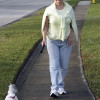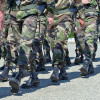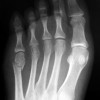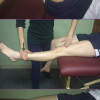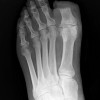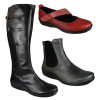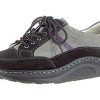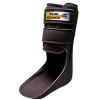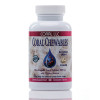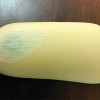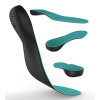Cover Story
Healthcare education materials for patients are consistently written at a reading level too advanced for a significant number of people–a trend that affects all aspects of lower extremity care and can adversely affect clinical outcomes.
By Hank Black
Editor Message
The Internet and social media have transformed health advocates’ ability to disseminate educational information, which has the potential to substantially improve outcomes across all healthcare disciplines.
By Jordana Bieze Foster
Departments
The frontal and sagittal plane gait biomechanics associated with progression to total joint replacement in patients with knee osteoarthritis, particularly variables related to sustained loading, may be promising…
By Cheryl Hubley-Kozey, PhD, and Gillian Hatfield, PT, PhD
Study findings suggest that increased loading rates and tibial acceleration are associated with an increased risk of sustaining a tibial stress fracture. Interventions directed at reducing these impact…
By CPT Jamie B. Morris, DPT, OCS, CSCS, and LTC Donald L. Goss, PT, PhD, OCS, ATC
Given that older women are at increased risk for osteoporosis, an increased incidence of fifth metatarsal fractures with increasing age in women suggests that such injuries could serve as an early point of entry into osteoporosis treatment and fracture prevention.
By David Beck, MD, Justin Kane, MD, and David Pedowitz, MD
Research utilizing contrast-enhanced ultrasound suggests that, although cryotherapy effectively decreases the pain associated with exercise-related muscle damage, those symptomatic effects are not associated with decreased blood flow in the affected skeletal muscle.
By Noelle M. Selkow, PhD, ATC, and Susan A. Saliba, PhD, MPT, ATC
With evidence-based protocols in hand, practitioners can feel more comfortable clinically integrating surface electromyography (sEMG) assessment, creating more sophisticated sEMG treatment protocols, and demonstrating the effectiveness of interventions.
By Rachelle Bordlee, sDPT, and Christopher Kevin Wong, PT, PhD
News
In the Moment: Sports Medicine
By P.K. Daniel
Although existing anterior cruciate ligament (ACL) injury prevention programs have been successful at reducing the incidence of ACL injury, a new study suggests that tailoring interventions based on four risk profile subtypes could be more effective.
Individuals with femoroacetabular impingement (FAI) demonstrate alterations in foot mechanics as well as hip mechanics, a finding that may have implications for orthotic management of this population, according to an Israeli study.
Magnetic resonance imaging (MRI) has no added value for predicting how soon athletes can return to sport after acute hamstring injury compared with predictions based only on patient history and clinical examination, according to a recent study.
In the Moment: Diabetes
By Emily Delzell
Patients with diabetic neuropathy and hallux rigidus (HR) undergoing partial amputation of the hallux are 7.7 times more likely to need reamputation than their counterparts without HR, according to research from Georgetown University in Washington, DC.
Nearly two thirds of patients with diabetic foot osteomyelitis heal with medical management alone, with patients with metatarsal site infection most likely to require amputation, according to research from the UK.
Diabetic foot ulcers (DFUs) cost $8.78 billion per year in emergency department (ED) care and subsequent inpatient admissions, with the rural poor at particularly high risk for serious complications, according to…
Market Mechanics
By Emily Delzell
Products
Arcopedico USA offers new comfort boots and flats for fall and winter 2015. Claire is a classic riding boot with a 14″ soft leather shaft, a wide toe box, detailed stitching, two adjustable calf buckles, a 1″ heel, and an antimicrobial, cushioned insole.
The Helli Dynamic Walking Shoe from Waldlaufer USA is designed for people suffering from plantar fasciitis, heel spurs, hallux limitus, or metatarsal pain. The mild rocker sole supports the arch while gently propelling the foot through the gait cycle…
The new KLM Brace from KLM Laboratories is a custom-molded gauntlet-style ankle foot orthosis (AFO) specifically designed to stabilize the lower extremity, improve mobility, reduce pain, and decrease the risk of falls in patients with instability…
Ease gradient compression hosiery from Therafirm is designed to promote better blood flow, prevent swelling, and relieve tired, achy legs and feet and to be donned with ease by people with limited mobility or dexterity. The soft, breathable…
The new Coral Chewables supplement has a Bavarian cream flavor and delivers 500 mg of bioavailable coral calcium in addition to 73 other minerals. The above-sea coral calcium is intended to help patients reduce the risk of osteoporosis and…
Becker Orthopedic now offers the new Compact Double Action Ankle Joint (Model 725) for orthotic devices, designed to provide a variety of options in one complete small package. The Compact Double Action Ankle Joint comes optimized with…
The Standard Cyborg Water Leg is a 3D-printed, waterproof leg that a transtibial amputee can use in the shower, at the beach, or in the pool with no need to worry about damaging his or her primary prosthesis. The 30-minute scanning process can be…
The Mobils Ergonomic Collection of all-over padded shoes by Mephisto includes three advanced technological features. All-over soft padding between the lining and the natural leather upper cushions the entire foot. The anatomic removable footbed…
The new APS-500 material from Allied O&P Supply is a flesh tone colored, high-strength polyethylene that can be used in place of Sureform and Subortholen when making custom foot orthoses. It is suitable for deep draws and embossing.
Sols has released a new orthotic design with the company’s signature Stabilized Heel Cup. The Stabilized Heel Cup feature, intended for patients who overpronate or underpronate, helps improve ankle stability and alignment by…




